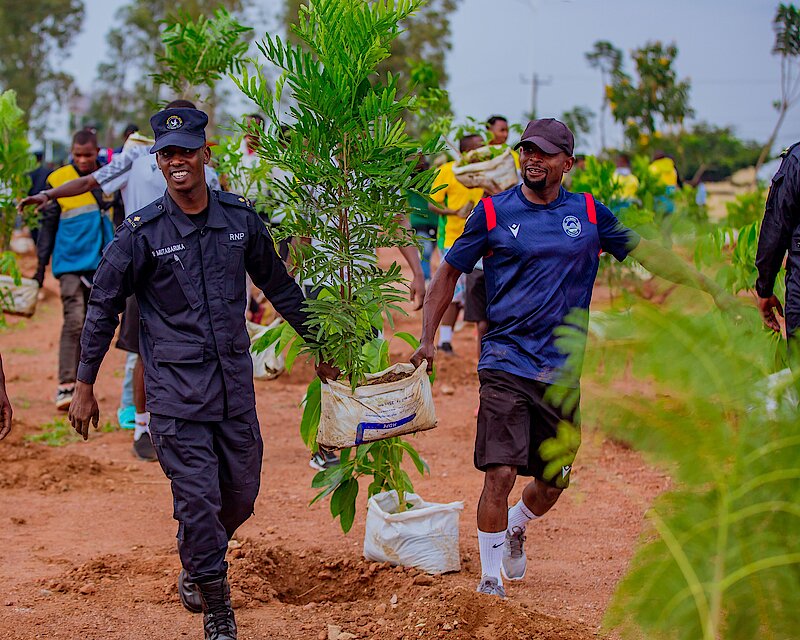How the City of Kigali is using trees and collaboration to build climate resilience
Nature-based Solutions (NbS) are undeniably « à la mode ». As they have been showcased here before, they are scalable and effective means that use, protect, sustainably manage and restore natural or modified ecosystems to address the interlinked climate and biodiversity crises while delivering important benefits for human well-being and livelihoods. Meaning, working ‘with’ nature, ‘for’ nature, but not only. The most impactful NbS do more than restore natural ecosystems: they strengthen social and economic fabric locally, and reflect the cultures and voices of the people they aim to serve. For example, NbS offer a large scope of employment opportunities for vulnerable populations, although workers rights and inclusiveness in NbS jobs, as in the green transition overall, require robust policy frameworks, investing in skills development, and strengthening research. Today, over 60 million people worldwide work in NbS activities. Through targeted investments, employment in this field could increase globally, especially in Africa, Latin America and the Arab States, where the share could go from around 5 per cent currently to over 40 per cent.
Across sub-Saharan Africa, NbS are gaining ground: in the past decade alone, the number of NbS projects has grown by an average of 15% per year, with initiatives sprouting across cities, forests, and farmlands. From large-scale reforestation efforts to small community-led projects, they may differ in form—but they tend to succeed when rooted in local knowledge, backed by government support, and nourished by international collaboration. While NbS tend to focus on environmental challenges like climate mitigation and biodiversity loss as well as land degradation, there is untapped potential for more “green-grey” infrastructure which integrates both the built and nature-based infrastructure (NbI). In this direction points the SUNCASA (Scaling Urban Nature-Based Solutions for Climate Adaptation in Sub-Saharan Africa) initiative, a three-year effort funded by Global Affairs Canada and implemented by the International Institute for Sustainable Development (IISD), the World Resources Institute (WRI), and local partners in Dire Dawa (Ethiopia), Kigali (Rwanda), and Johannesburg (South Africa), to benefit 2.2 million people living in high-flood-risk areas.
Under this program, the city of Kigali is implementing a project that blends science with community action to restore upstream micro-catchments in the lower Nyabarongo River watershed—an ambitious effort to reduce floods, landslides, and soil erosion that have become increasingly destructive in recent years. Through a coalition led by the city, with local partners like the Rwanda Young Water Professionals, the Albertine Rift Conservation Society (ARCOS), and AVEGA Agahozo (an association of genocide widows), they are restoring nine critical sub-catchments through afforestation, reforestation, agroforestry, and urban greening. The results are already visible, and the goal is that over 2 million trees will be planted across the Gasabo, Nyarugenge and Kicukiro districts by 2026. Buffer zones are stabilising riverbanks and gullies; degraded hillsides are being reforested; and 125,000 fruit trees are diversifying incomes for local families.
But beyond trees, what makes this work stand out is its commitment to inclusion. In a country where men still hold most decision-making power, the project brings women and men together in workshops to reflect on gender norms and create space for more equitable participation. The youth and urban poor are also at the centre—through job creation, training opportunities, and a new campaign, “Igiti Cyanjye” (“My Tree”), which mobilises residents to take care of green spaces planted during monthly Umuganda community service days.
Image Credit: Kigali City

